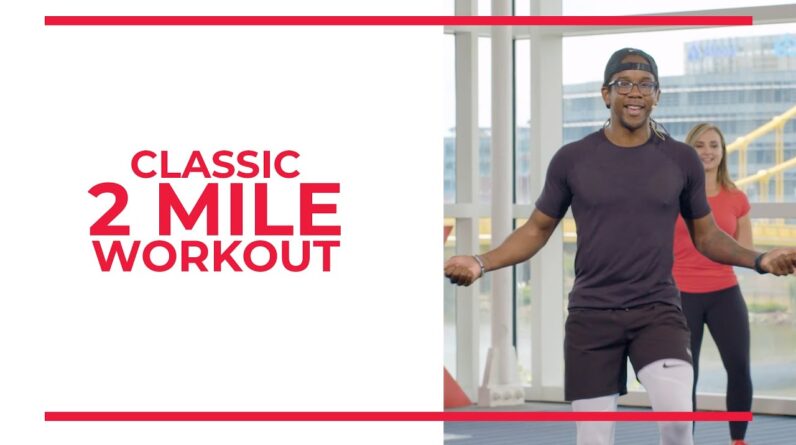
Everyone talks about ‘doing cardio,’ but what actually is cardiovascular fitness? How do we test it? And how do we train for it? In this article we’re going to be answering exactly those questions, plus looking at…
- The science behind cardiovascular fitness
- Why is cardiovascular fitness so important?
- And examples of cardiovascular fitness training
Let’s jump straight into it.
Definition of cardiovascular fitness
The best definition of cardiovascular fitness is as a measure of how well your body takes in oxygen and delivers it to your muscles and organs during prolonged periods of exercise.
It’s a broad definition as cardiovascular fitness encompasses a wide range of physical adaptations.
The science behind cardiovascular fitness
Cardiovascular fitness is impacted by the health and capability of both your heart and lungs. Physiologically, this means that components of cardiovascular fitness include things like your heart rate, stroke volume, cardiac output and maximal oxygen consumption (VO2 Max).
With that in mind, any type of training or intervention (aerobic or anaerobic) that improves these qualities will improve your cardiovascular fitness. Within body adaptations include…
- General metabolism increases
- Improved muscle metabolism
- Rises in haemoglobin
- Increased bloodstream buffers
- Improved venous return
- Improved stroke volume
- Plus your blood bed becomes more adaptable to varying demands
Why is cardiovascular fitness important?
Cardiovascular fitness benefits us in a variety of different ways; two of the biggest of which are health and sports performance.
Health
Higher levels of cardiovascular fitness are associated with improved health across a wide range of markers. In fact, a 2009 meta-analysis (Kodama et al.) reviewed results from 33 studies and a total of over 100’000 people to find that better levels of cardiovascular fitness are strongly associated with lower all-cause mortality. In other words, being fitter makes you less likely to die of essentially every natural cause! That includes…
- Peripheral artery disease
- Blood clots
- Congestive heart failure
- Heart attack
- Stroke
- High blood pressure
- Arterial blockage
- Ischemia
- Coronary artery disease
- Atherosclerosis (hardening of the arteries)
- Insulin resistance syndrome
- Angina
- Cardiac Arrhythmia
Sport & Performance
Another major benefit of cardiovascular fitness is it’s impact on sports performance.
Many sports require a significant base of cardiovascular fitness in order to perform at a good or even half-decent level. Even in sports such as archery that seem far removed from what we traditionally think of as cardio, there are noticeable benefits to cardiovascular fitness. In the archer’s case, a slower heart rate makes it easier to shoot in between heartbeats, improving accuracy.
Then we have to consider that there are sports like running, swimming and cycling in which cardiovascular fitness is more or less the main determining factor for success.
What is the best exercise for cardiovascular fitness?
There is no single ‘best’ exercise for cardiovascular fitness.
Cardiovascular exercise is simply any vigorous activity that increases heart rate and respiration and raises oxygen and blood flow throughout the body.
For most people, the ‘best’ exercise is simply the exercise that they enjoy doing on a regular basis, and can see themselves consistently doing for many months or years. It’s also completely fine to mix and match cardio exercises based on your changing interests.
Examples of cardiovascular fitness
Right at the top of our list we have the most commonly thought of cardio exercise examples…
All of which are fantastic options.
However, there are loads of other great cardio options for us to explore…
- Rowing
- Skiing or ski-erg machine
- Cross-trainer machine
- Power walking
Plus what about exercise classes like…
- Zumba
- Boxing
- HIIT and circuits
Or, if none of those seem like your thing, you might also be interested to know that resistance training of high enough intensity has also been shown to improve cardiovascular fitness. So you can include…
- Bodybuilding
- Strength training
- Crossfit
You’re not going to magically be able to run a marathon or complete an iron-man triathlon with these resistance training approaches, but they will improve your cardiovascular fitness far beyond that of sedentary individuals.
How to test cardiovascular fitness
There are hundreds of different ways to test cardiovascular fitness.
Most commonly, maximum oxygen uptake (VO2 max) is tested, as it forms a major component of cardiovascular fitness. For best results this test is conducted in a sports science lab setting. However, for most fit and healthy people we can use gym and field-based submaximal tests to estimate VO2 max with a good degree of accuracy. Common tests include…
For sedentary individuals who cannot manage these tests, we might use something like the Cooper 1.5-mile walk-run test. It’s not quite as good of an estimator as the above tests, but it’s still accurate enough to be a useful test.
Alternatively, a more practical measure of cardiovascular fitness would simply be to track your performance in exercises and types of sessions that are relevant to your goals and interests. A simple example might be…
- If you’re a runner, how fast can you run 5k? If you run it in 30 minutes today and then run it in 25 minutes in a few months time, you can be pretty sure that your cardiovascular fitness has improved.
Frequently asked questions about cardiovascular fitness
What are the signs of poor cardiovascular fitness?
The most obvious sign is that you’ll find yourself getting out of breath and experiencing an elevated heart rate far more often, even whilst performing fairly easy tasks. Other signs include high blood pressure and heart problems. If you play a sport, you may find that you can’t keep up with the pace and demands of the game.
Are press-ups cardio? Are squats cardio?
Resistance training exercises like press-ups and squats can both be used to improve cardiovascular fitness, so long as they are sufficiently challenging and raise your heart rate. Generally speaking, performing more sets and more reps with shorter rests is going to make the exercises a better cardio workout. So 5 sets of 20 reps with 45 seconds rest is going to be a much better cardio workout than 3 sets of 5 reps with 3 minutes rest.
What is cardiovascular endurance?
Cardio endurance and cardio fitness are basically just the same thing. You could argue that cardio endurance specifically refers to long duration cardio fitness, but for all intents and purposes they mean the same thing, and coaches, sport scientists and athletes use them fairly interchangeably.
Next Steps
- If you’ve enjoyed this article, we also have articles on related topics such as aerobic glycolysis and lactic acid.
- If you’ve got any questions, comments or suggestions for future content, feel free to let us know down below.
For more on the 5 health related components of fitness, check out this article. Or head here for a deeper dive into muscular strength, muscular endurance and flexibility.
Further Reading
Reference
If you quote information from this page in your work, then the reference for this page is:
Parry, A (2021). Cardiovascular fitness: explained, how to train & how to test.Available from: https://sportscienceinsider.com/cardiovascular-fitness-explained-how-to-train-how-to-test/. [Accessed dd/mm/yyyy].

Alex Parry
Alex is the Owner and Head Coach of Character Strength & Conditioning, and specialises in strength & power development for athletes.
He currently works as a Tutor & Educator for British Weightlifting, and has previously delivered S&C support to gymnastics and swimming talent pathways.








